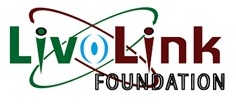/regions/political
Political
Teesta, Tipaimukh and riverlinking: Danger to Bangladesh-India relations – A paper in Economic and Political Weekly
Posted on 06 May, 2012 11:25 AMBangladesh shares 54 rivers with India. Any unilateral action by India on any of its international rivers will degrade its relations with its neighbours while also adversely affecting its ecology, economy and society. Bangladesh being a riverine and a lower riparian country remains sensitive to matters of water, whether inland or maritime.
Workshop on Environmental Flows, Aaranyak and River Research Centre (Kerala), May 6, 2012, Guwahati
Posted on 06 May, 2012 12:31 AMOrganisers: Aaranyak and River Research Centre
Venue: Indian Institute of Bank Management,
Khanapara,
Guwahati

Effects of industrial and agricultural activities on properties of groundwater - A paper published in the Bulletin of Environment, Pharmacology & Life Sciences
Posted on 05 May, 2012 03:24 PMThe main sources of groundwater contamination are industrial, municipal and agricultural wastes (both solid and liquid), rocks, sludge and slimes, refuse, pesticides, herbicides, effluents from livestock and poultry farms. Many pollutants are even able to penetrate into groundwater aquifers.
Septic tanks or death tanks! We need to improve sanitation facilities to eradicate the inhuman practice of manual scavenging
Posted on 05 May, 2012 03:18 PMAuthor : Gagandeep
“We have to end the biggest dehumanising activity called manual scavenging”
Occupational health hazards in sewage and sanitary workers - A paper published in the Indian Journal of Occupational and Environmental Medicine
Posted on 04 May, 2012 03:59 PMWorking conditions of the sanitory workers have found to remain unchanged over the years and pose a considerable risk to the dignity and health of the workers.
Natural farming and environment festival, Kheti Virasat Mission, May 11-13 2012, Bathinda, Punjab
Posted on 04 May, 2012 01:04 PMOrganiser: Kheti Virasat Mission (KVM)
Venue: Teachers Home,
Bathinda,
Punjab

NABARD invites applications for "Award for Rural Innovations", Mumbai, Apply by May 15, 2012
Posted on 04 May, 2012 12:01 PM
NABARD is set up as an apex Development Bank with a mandate for facilitating credit flow for promotion and development of agriculture, small-scale industries, cottage and village industries, handicrafts and other rural crafts.
CDD Society invites applications for job openings, based in Bangalore
Posted on 04 May, 2012 11:28 AM
Fluorosis mitigation in Dhar, Madhya Pradesh: Experiences of monitoring fluoride levels in drinking water and human urine, and implementing mitigation measures
Posted on 04 May, 2012 08:48 AMBackground:
62 million people in India, including 6 million children suffer from fluorosis. The root cause of this is excessive fluoride (>1.5mg/l) in groundwater, as is found in 20 states across India.
Objectives:
